5. Martyrs (2008, Pascal Laugier)
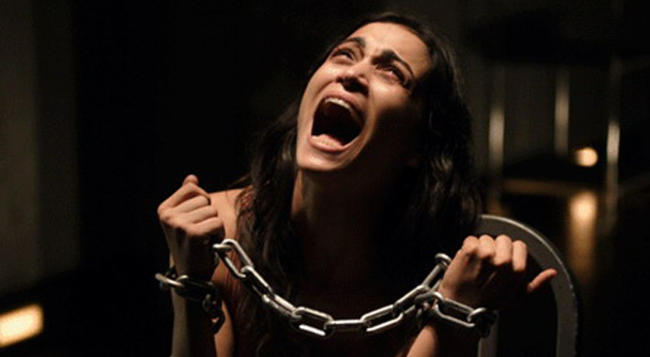
“The only difference between a suicide and a martyrdom really is the amount of press coverage.”
-Chuck Palahniuk, Survivor
With no steady atmosphere, no swirling graveyards or castles built into the hills, Martyrs is a modern day bloodbath that builds up its terrors in the first few minutes and doesn’t stop hurling itself at you for the next 90 odd minutes. Like The Last House on the Left and its incessant carnage, the feeling that rises from this film is akin to falling into an abattoir, with no way to escape.
Lucie, after escaping captivity and abuse, is sent to a care home where she meets Anna, herself a victim, and both set out on mission of retribution and vengeance against Lucie’s captors. Lucie spirals into madness in a hopeless quest for revenge leaving Anna to relive Lucie’s ordeals.
If you’ve seen any film with the label “torture porn” then don’t come into this looking for the same, it’s really a different beast altogether. It shares the buckets of gore that is familiar with the genre but doesn’t wallow in it for entertainment or to purposely make the audience squirm through their endless pits of popcorn. In context, the butchery in this film is daunting, disgusting and intelligent.
For Lucie and Anna the suffering is unending and until they reach the perimeter of life and move on into martyrdom, does the violence stop. Pascal Laugier makes sure that this ordeal is never cautiously presented and the terrified audience transcends with these unfortunate creatures.
4. The Exorcist (1973, William Friedkin)
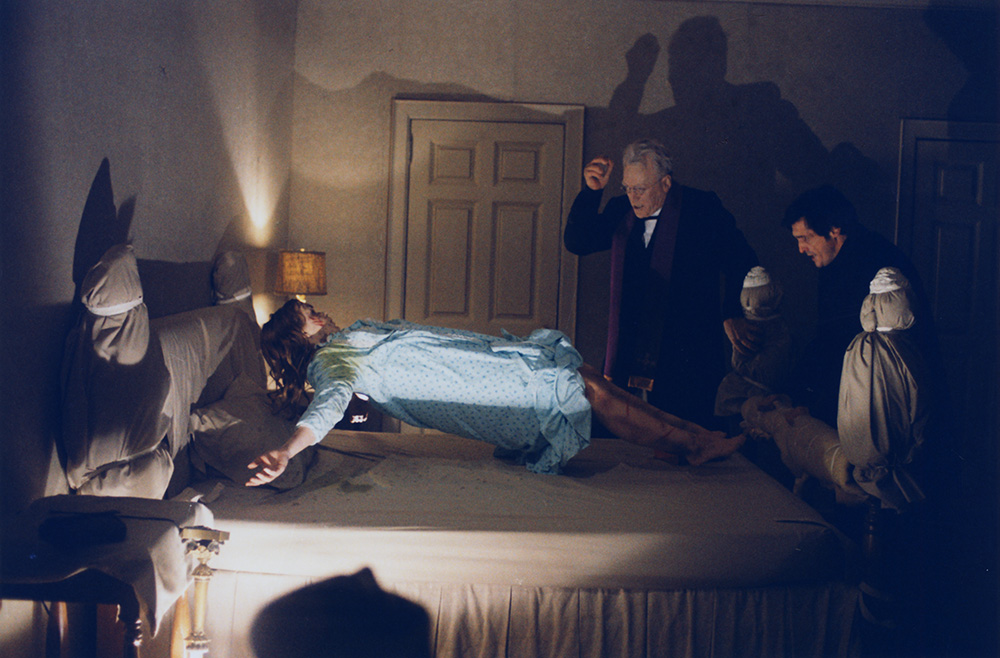
Horror came squirming out of the 60’s with Roman Polanski’s sinister Rosemary’s Baby and landed squarely into the paranoid laps of the early 70’s audiences with William Friedkin’s The Exorcist. Still a daunting watch today, its tale of an ancient malignant demon possessing the soul and body of a twelve year old girl is every bit as terrifying as when it was first unleashed on its audiences.
Father Merrin (Max von Sydow, an actor who has portrayed enough characters who have had their own brushes with the nature of God) is a priest on an archeological expedition in Iraq.
There he finds a relic that bears a resemblance to Pazuzu, a demon he had encountered years previous. The demon has returned and is now seeking vengeance. Regan (Linda Blair) is a twelve year old girl living in Washington DC, daughter of an actress Chris MacNeil (Ellen Burstyn).
And after fooling with a Ouija board, begins to act strangely. After being medically cleared by doctors, Chris turns to the church and fallen priest Father Karras (Jason Miller). Karras enlists the help of exorcism expert Merrin, and from there on the film, almost documentary in its execution, is an anguished, petrifying exercise in horror.
Even though the film was and is immensely popular, this is no popcorn movie, its infamous scenes of head spinning and masturbation are deeply disturbing, but it’s the genuine air of evil that hangs over the film that really haunts the viewer.
The final exorcism, as the two priests struggle against the great force of the evil that is harbouring inside Regan’s tortured body is its crowning achievement in terror. Past the startling dreams of Karras and the initial signs of possession, this last act is one that will chill and completely annihilate the senses.
No film before it or after it depicts the pain of possession in such quite graphic and terrifying detail. Friedkin’s film uncoils itself just like an ancient evil would inside the fragile souls of audiences, ready to manifest itself whenever darkness infiltrates the mind.
3. The Innocents (1961, Jack Clayton)
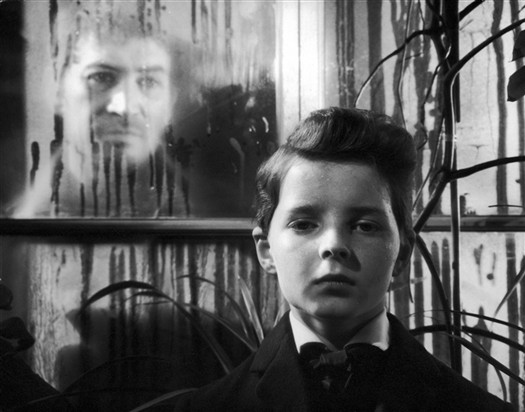
Sometimes the things that live in the imagination are far more worrying than what lurks on the outside. The glimpse of something fleeting in the corner of the eye, the scratch outside the door or the creak along an empty hallway, The Innocents is Jack Clayton’s masterful exercise in just that, the unknown, and the fear of it.
Its seeming beauty on its surface making way for a rotting, frozen gothic, where sightings of the ghosts are so shrouded in doubt, we start to think if there are actually spirits or are we experiencing the same delusions as uptight governess Miss Giddens.
Giddens (Deborah Kerr) is hired by the uncle of two orphaned children Miles and Flora, after the previous governess dies, whilst the uncle (Michael Redgrave) goes back to London to enjoy his life of frivolity free of the burdens two adolescents would create. As she settles, Giddens encounters strange happenings on the estate, are these a figment of her fragile mind or are these ghostly apparitions setting out to possess the children, and making them act in some very troubling ways.
It’s fear that drives this film. Fear of Giddens repression bubbling to the surface, fear of the haunting and eventually fear of the children. Whilst peppered with the stock haunted house trappings of long dark hallways, winding staircases and howling winds through flung open windows, The Innocents drag us deeper than any film would’ve before it and not many have after it.
The flowing black and white photography by Freddie Francis is seemingly as fragile as Miss Giddens herself, like one last scream will shatter the images it contains. Rich with atmosphere, with some expertly crafted disturbances and a decaying air of real menace; this is the ultimate in monochrome haunted house movies.
2. Alien (1979, Ridley Scott)
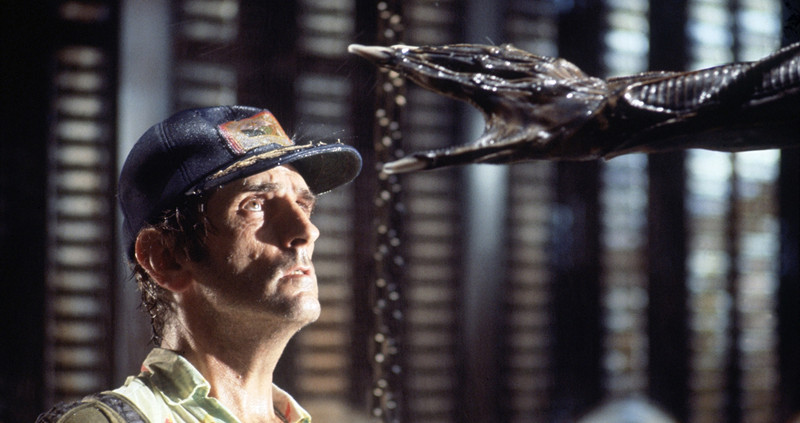
Alien is the writhing, twisting abortion of previous seventies alien films Close Encounters of the Third Kind and Star Wars. It takes the premise set by the stalk and slash genre (still in its infancy in 1979) and drives it star bound to a permanently nocturnal world, where escape is futile and almost impossible, and rescue is hopeless the perfect place then, to craft the pinnacle of 70’s terror.
Heading to Earth, the Nostromo ship receives an S.O.S. from a nearby planet and reroutes the ships course, away from Planet Earth to investigate the help signal. The crew onboard are awakened from their slumber. Once on the planet, Dallas (Tom Skerritt), Kane (John Hurt), and Lambert (Veronica Cartwright) stumble upon a vast deserted vessel, save for a room full with abnormal eggs littered along its surface.
Upon inspection, the egg opens and the spidery organism that grows inside leaps out and attacks Kane. They return to the ship with a stricken Kane and from there ensues a terrifying game of cat and mouse, with Ripley (Sigourney Weaver) escaping the advances of an unwanted stowaway.
As slow moving and deliberate as the Nostromo ship itself, we drift along with it through an endless void of nothingness, a black celestial tomb. The sheer claustrophobia in Alien is suffocating; the alien could really be within touching distance at every turn. We are never destined to break out of its terrifying embryonic shell and be free; we are compressed into the Nostromo with Ripley and the alien.
The creature itself (culled from the mind of artist H.R. Giger) is a monstrous image, a black industrial landscape of alien muscle, spitting out of the shadows and grabbing at its prey. The level of horror in Alien is intoxicating; the suffering it portrays is close-up and unbearably threatening, and like the dark force that spreads its way through a sleepy everyman town in Halloween, Ridley Scott shows us that even in serene deep space there is evil.
1. The Shining (1980, Stanley Kubrick)
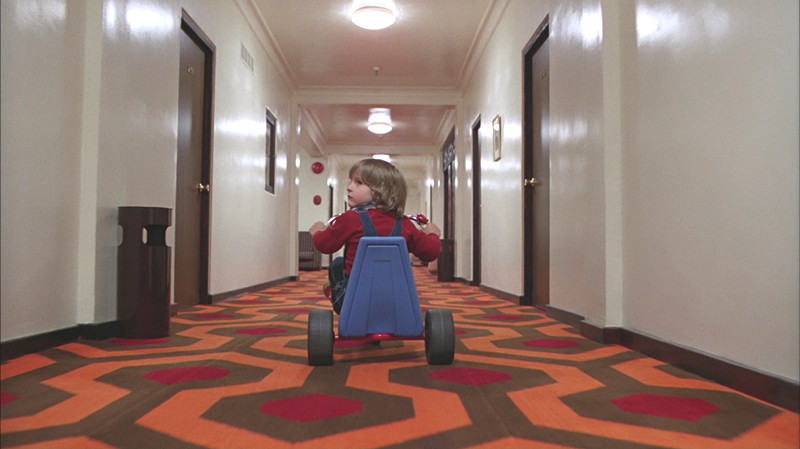
Stephen King famously disagreed with Kubrick’s vision in his adaptation of King’s novel The Shining; King stated that “it never gets you by the throat”. Kubrick may have strayed from the source somewhat but what he crafted instead was the most terrifying film of any generation, one injected with such horror that it broods, pregnant and thick with dread. Every scene masterfully creates menace as it lifts the most disturbing aspects out of the novel and embellishes them with unforgiving detail.
Jack Torrance (Jack Nicholson), a failed father, a bitter husband, an unpublished author and an ex alcoholic, uproots his family when he takes on a caretaking job for the winter months in the snow bound, but picturesque Overlook Hotel deep in the Rocky Mountains.
This, he thinks will give him the space and the free time to write his literary masterpiece. Unfortunately, far from being the influence he needs to spark the creative fire, the Overlook twists and changes him, becoming his tormentor.
The hotel is a winding maze, corridors twist where they shouldn’t, and every room within it is another chamber of Jacks distorted mind. It’s a claustrophobic labyrinth of hallucinations, madness amid the foreboding space of the Overlook.
From great rivers of blood, to moving corpses and creepy twins, Kubrick uses his visual flare and creates pure horror, and some of the images from this film have gone down in horror history, Jack’s clammy face peering out through an axe made hole in a bathroom door is one that adorns posters and horror publications worldwide.
Also the amount of analysis some have done into this film is extraordinary, and if all the theories are true then one of the most terrifying aspects of the film has to be Kubrick’s formidable genius.
Author Bio: Daniel Evans is a former art student, and writes mainly for his own entertainment. He developed a keen interest in film at a young age, and continues to unearth new, obscure movies when he can.